
Principal Investigator Dr Michael Brown considers the emotional dimensions of body-snatching and the Anatomy Act (1832).
The 1820s and early 1830s were a time of heightened political tension in Britain, with Catholic emancipation and the reform of the electoral system promoting vociferous debate and even violent disorder. Even so, for sheer emotive power, few political issues could rival that of the procurement of human bodies for the purposes of anatomical dissection and surgical training.
Traditionally, surgeons had been trained by means of apprenticeship, with young men spending up to seven years under the guidance of a master to learn the ‘mysteries’ of their craft. This system dated back to the medieval period and was part of surgery’s corporate identity. By the late eighteenth century, however, and with surgery’s transition from trade to scientific profession, things were beginning to change. Those who could afford the fees might become the pupil of an established surgeon. This contractual system in some ways resembled apprenticeship, but did not require such intimate domestic arrangements. For others, meanwhile, a more ad hoc curriculum could be assembled through a mix-and-match combination of lectures and practical instruction, a system of education that was recognised both by the Court of Examiners of the Royal College of Surgeons and by the Apothecaries’ Act of 1815.
In order to cater for this different model of education, there was a proliferation of both hospital and private anatomical schools in later eighteenth- and early nineteenth-century London. By 1828, it was estimated that some 700 students attended one of more of these establishments every year. These schools operated within a competitive commercial environment and often sold themselves on the availability of cadavers for anatomical and surgical instruction, with each student getting hands-on access to one or more bodies. There was a problem with this, however. Legally speaking, the only legitimate access to bodies for dissection was provided by the Murder Act of 1752, which allowed for the public anatomisation of hanged murderers. But as only 25 people were executed for murder in London between 1800 and 1820 (a mere 28% of the 88 sentenced to death at the Old Bailey), this provided an average of only 1.25 bodies per year. Clearly such numbers were grossly insufficient for the training of hundreds of students. [1]
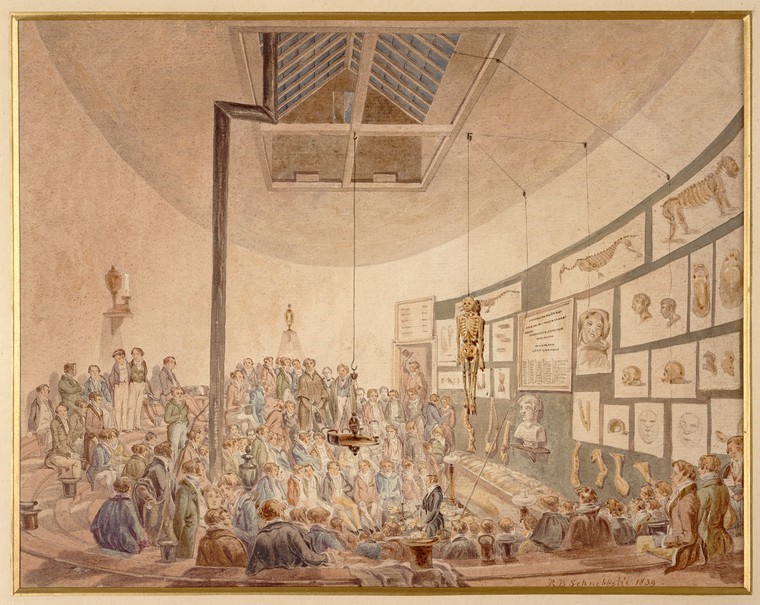
As a result of this, and as is now notorious, surgeons made extensive use of the services of ‘Resurrection Men’, body-snatchers who would exhume and sell the bodies of the recently-buried. The legal status of body-snatching was not entirely clear. As the body had no monetary value in English law, stealing it was not technically theft. Interfering with a grave was a misdemeanour offence in common law, and medical practitioners who received bodies could be an accessory to that crime. However, most were unaware that receiving ‘stolen’ bodies contravened the law in any way.
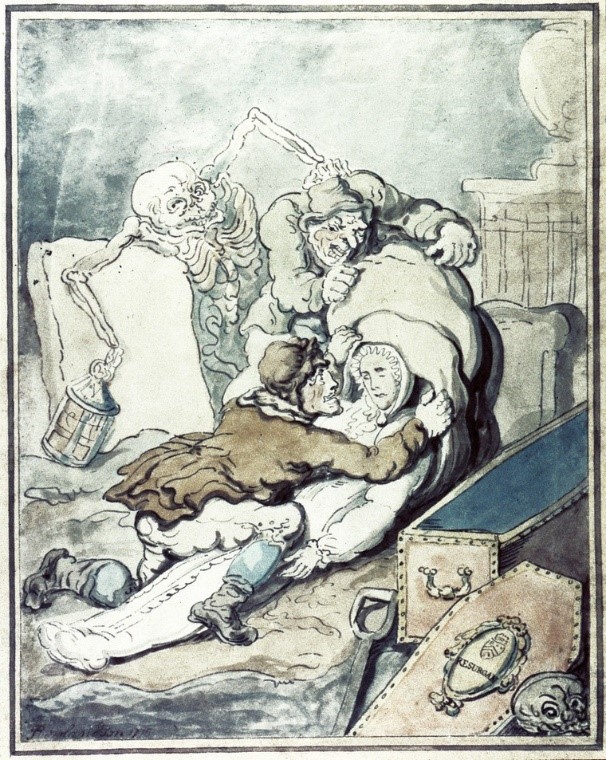
The illicit appropriation of bodies for the purposes of anatomy had a long history, but the activities of professional Resurrection Men peaked in the 1820s and were the cause of widespread alarm and revulsion. Despite the anomalous legal dimensions of the matter, there was a growing desire among surgeons and progressive politicians to reform the law. The impetus for this came not only from surgical self-interest, but also from the growing political influence of utilitarianism. This was the philosophy of Jeremy Bentham (1748-1832) which, broadly speaking, sought to balance the needs and desires (‘happiness’) of the individual against those of society as a whole (‘the greatest good for the greatest number’).
In 1824, Bentham’s friend and physician Thomas Southwood Smith (1788-1861) published an article in the utilitarian journal The Westminster Review, entitled ‘The Uses of the Dead to the Living’, in which he suggested that physicians and surgeons were ‘in the daily habit of administering to their fellow men more real and unquestionable good, than is communicated, or communicable by any other class of human beings to another’. He proceeded to argue that, while the sanctity of the corpse and the strength of feeling that attached to its preservation were the product of ‘the noblest and sweetest sympathies of our nature … the promotion of the happiness of the living is a duty from which we can never be exonerated’.[2]
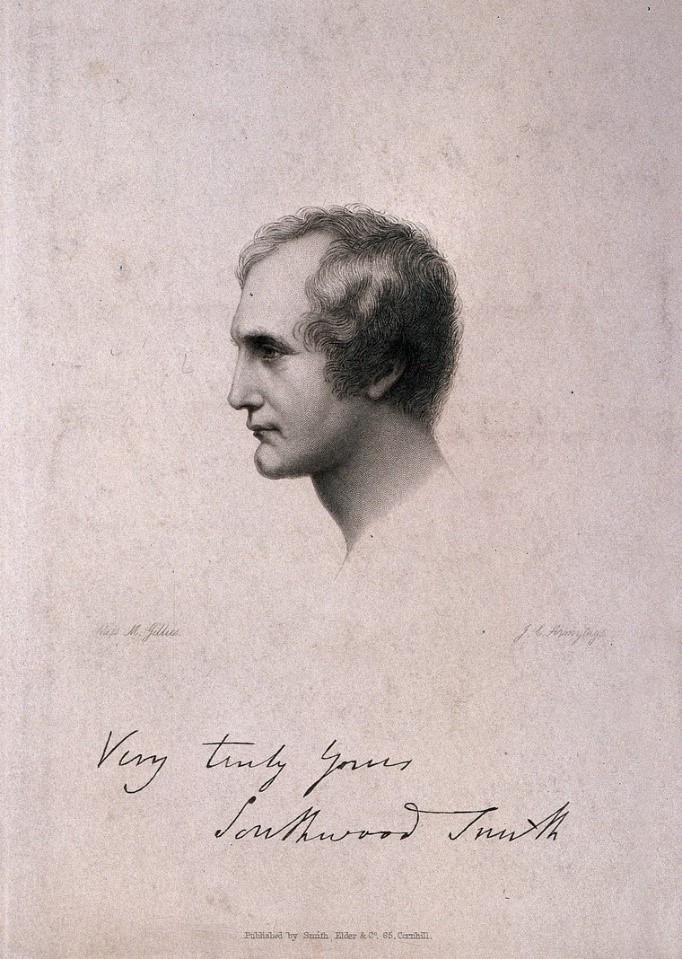
Emotion plays an interesting part in Smith’s work. For example, he suggests that ‘every feeling of the human heart raises up against’ the actions of body-snatchers and that it was ‘odious’ that surgeons had to associate with them at all. For the most part, however, Smith mobilises sentiment in pursuit of his philosophical aim: the sublimation of a cultural, spiritual and emotional attachment to the bodies of the dead into a higher sense of duty to the social good. For example, in referring to the prospect of a surgeon unprepared through lack of anatomical experience to perform an operation, he writes:
We put it to the reader to imagine what the feelings of an ingenuous young man must be who is aware of what he ought to do, but whose knowledge is not sufficient to authorise him to attempt to perform it, and who sees his patient die before him, when he knows that he might be saved and that it would have been within his own power to save him, had he been properly educated. We put it to the reader to conceive what his own sensations would be, were an ignorant surgeon … to undertake an important operation … suppose it were his mother, his wife, his sister, his child, whom he thus saw perish before his eyes, what would the reader then think of the prejudice which withholds from the surgeon that information without which the practice of his profession is murder?[3]
That Smith chose to advance his argument as much through imaginative identification and an appeal to familial affection as through reasoned argument demonstrates the powerful resonance of sentiment and emotion within early nineteenth-century medical and political discourse. Even so, while utilitarian rhetoric, at least as communicated to the public, would never dispense entirely with emotion, there was a sense, even in Smith’s work, that sentiment might check the operations of science and ‘rational’ government. For example, his proposal to appropriate the unclaimed bodies of the poor who died in workhouses, prisons or other ‘public’ institutions for the purposes of anatomical dissection, was couched in the most coldly rational terms imaginable. ‘No maxim can be more indisputable’, he claimed, ‘than that those who are supported by the public die in its debt, and that their remains might, without injustice, be converted to the public use’.[4]
Smith’s logic would carry over into the Select Committee on Anatomy, convened in the spring and summer of 1828 and chaired by Henry Warburton (1784-1858) a radical MP and ‘avowed Benthamite’.[5] The Committee heard evidence from a number of surgeons, including Sir Astley Cooper (1768-1841), and in their discussion both Cooper and the Select Committee members deployed emotion to rhetorical effect. For example, Cooper was asked ‘Is it not distressing to men of character and education, as the teachers in the schools of Anatomy are, to be obliged to have recourse to a violation of the law, in order to obtain a supply of bodies and perform their duty towards their pupils?’. To this he replied that ‘it is distressing to our feelings that we are obliged to employ very very faulty agents to obtain a desirable end’.[6]
Cooper also deigned to imagine the public sentiment, suggesting that with regards to the appropriation of unclaimed bodies from public institutions, ‘As no person’s feelings would be outraged there would be no reasonable objection to it’. Once again, then, we see sentiment seemingly subordinated to reason and the higher dictates of the public good. Indeed, Cooper even went so far as to tell the members of the Committee that the cause of anatomical dissection ‘is not our cause, but your’s [sic]; … if you have none but ignorant medical men, it is you who suffer from it; and the fact is, that the want of subjects will very soon lead to your becoming the unhappy victims of operations founded and performed in ignorance’.[7]
But of course public sentiment could not be so easily disciplined. In fact, as the Committee was hearing evidence and preparing its report, events were unfolding in Edinburgh that would raise the stakes significantly. Between November 1827 and November 1828 William Burke and William Hare murdered sixteen people for the purpose of selling their bodies on to the anatomist Robert Knox. The subsequent trial and execution of Burke (Hare had been given immunity from prosecution for testifying against his accomplice) shocked public opinion and provoked a nationwide panic with suspected ‘Burkers’ being reported seemingly everywhere. Moreover, when the Anatomy Act was eventually passed in the heady summer of 1832, far from calming the public mind, it merely exacerbated the anger of the poor and of working-class political radicals who already felt themselves betrayed by their exclusion from the Reform Act, which had been passed by Parliament some two months before. Indeed, in a number of cases, such as in Manchester and Glasgow, medical practitioners tending to the sick in the cholera epidemic that also raged that summer, found themselves on the receiving end of violence from members of the urban poor who imagined (perhaps not unreasonably in the circumstances) that the bodies of their loved ones were being appropriated for reasons other than care.
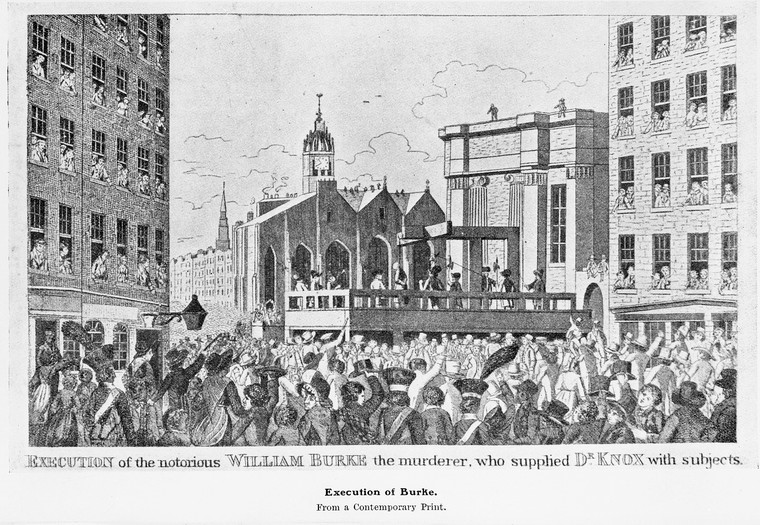
Despite this, proponents of the new law continued to try and advance a less emotive and more ‘rational’ understanding of post-mortem anatomical dissection. Generally speaking, much of the attention paid to the Anatomy Act has focussed on the appropriation of unclaimed bodies. What is less well known is that it also contained a clause allowing ‘any Person, either in writing at any time during his [sic] life, or verbally in the presence of Two or more Witnesses during the illness whereof he [sic] died’ to make their body available for dissection ‘unless the Person’s surviving Husband or Wife … shall require the Body to be interred without such Examination’.[8] Indeed, two months prior to the passage of the Act, Bentham died and, in his will, left instructions for Smith to dissect his body and transform it into an anatomical ‘Auto-Icon’ which remains, to this day, in the South Cloisters of University College London.
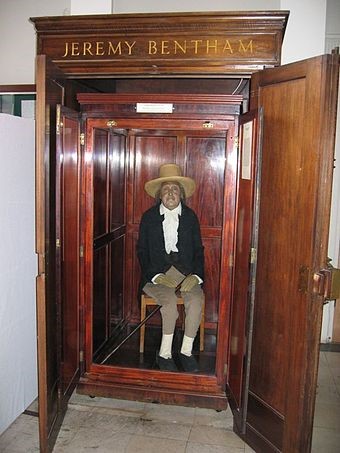
Exactly how many others followed Bentham’s lead is unclear, though it was certainly not a lot. However, in the archives of Sir Astley Cooper held by the Royal College of Surgeons there is a remarkable document suggesting that it wasn’t unknown. Written in convoluted legalese, dated 20th June 1833, and signed by William Williams, it opens thus:
Being fully sensible of the uncertainty of this life and the mortality of my animaled frame the tabernacle of my soul and of the living spirit that pervades it and under the impression of sentiment that my mind can have already received on the subject of public benefit derived from anatomy I beg Sir to communicate to you in writing what in substance has already been submitted by personal communication to your notice and approbation in regard to the body graciously bestowed me by my Maker when my hereafter desertion of that body by its animalled tenants of spirit and soul takes place.
In several lengthy, unpunctuated sentences, Williams goes on to state that if he should die a ‘bachelor and unmarried’, his ‘mortal remains may be at your disposal for the aforementioned purposes of dissection to be made by such able skilful and learned Surgeons as … you shall … think proper and expedient to call together for the purpose aforesaid’. However, as with the act, he makes an exception in the event of his marriage, in which case ‘I beg it to be understood … that … my said wife’s approbation or disapprobation may be obtained and ascertained and according as she shall or may approve or disapprove of the said dissection the approval or disapproval of and by her … is to … be considered as … my will and earnest desire and pleasure’.[9]
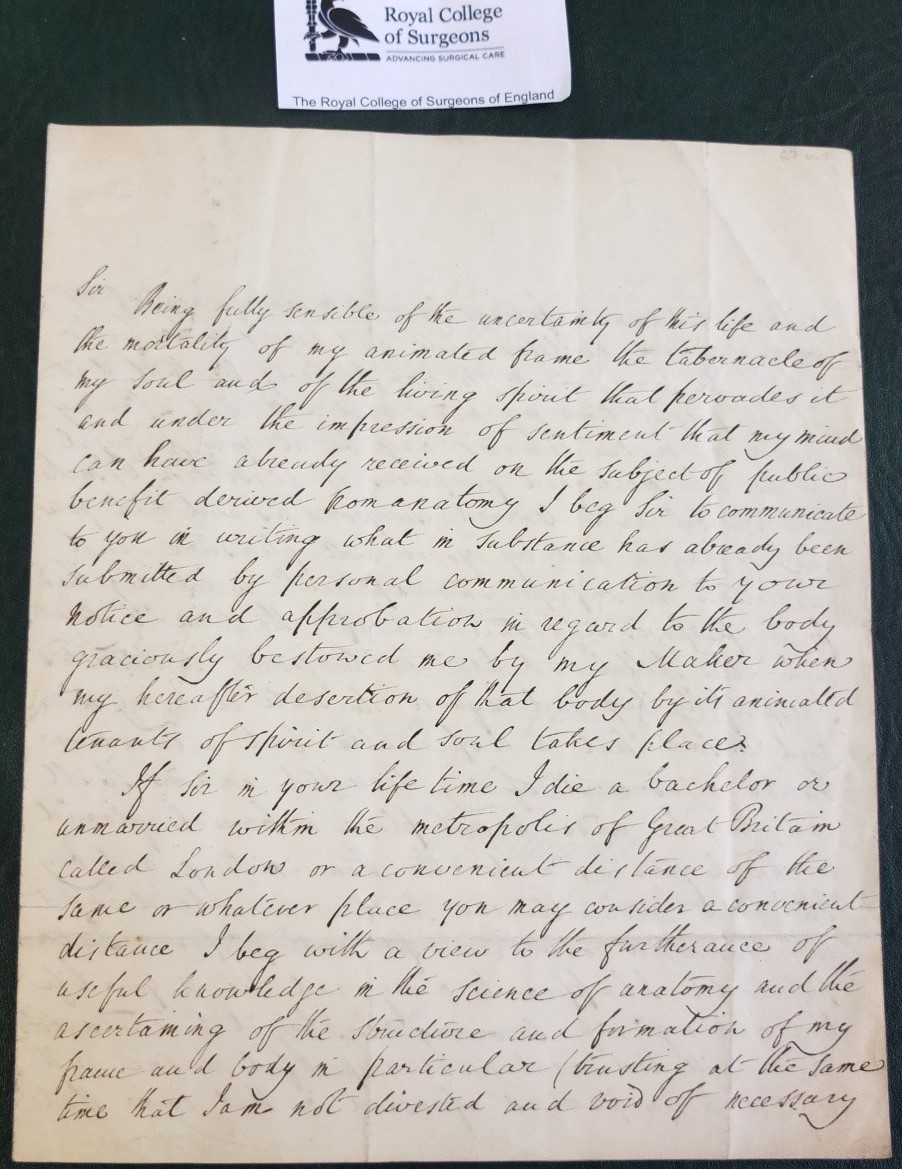
What is notable about both the Anatomy Act itself and Williams’ bequest to Cooper is that, despite all the attempts to render the subject one of pure ‘reason’, transcending sentiment, the affective ties of love and marriage could not be ‘torn asunder’. Even an individual’s stated desire as to the fate of their mortal remains could be countermanded by precisely that emotional attachment to the body of one’s deceased husband or wife that Smith had sought to eliminate through the dictates of a higher duty. In death, as in life, the biblical and legal injunction that the married couple were of ‘one flesh’ were, it seemed, as much literal as figurative.
[1] Thanks to the wonderful Digital Panopticon project website for allowing me to make these calculations. For my search click here. Consulted 15 October 2018.
[2] Thomas Southwood Smith, ‘The Uses of the Dead to the Living’, The Westminster Review (July 1824), pp. 59, 81.
[3] Smith, pp. 91-2.
[4] Smith, p. 94.
[5] H. C. G. Matthew. 2015 "Warburton, Henry (1784–1858), politician." Oxford Dictionary of National Biography. 17 October 2018. http://www.oxforddnb.com/view/10.1093/ref:odnb/9780198614128.001.0001/odnb-9780198614128-e-28672.
[6] ‘Report of the Select Committee on Anatomy’ (1828), p. 18.
[7] ‘Report’, pp. 19, 16.
[8] ‘Bill for Regulating the Schools of Anatomy’ (1831-2), p. 3.
[9] Royal College of Surgeons of England, MS0008 2/2/1 – Case notes of Sir Astley Cooper.